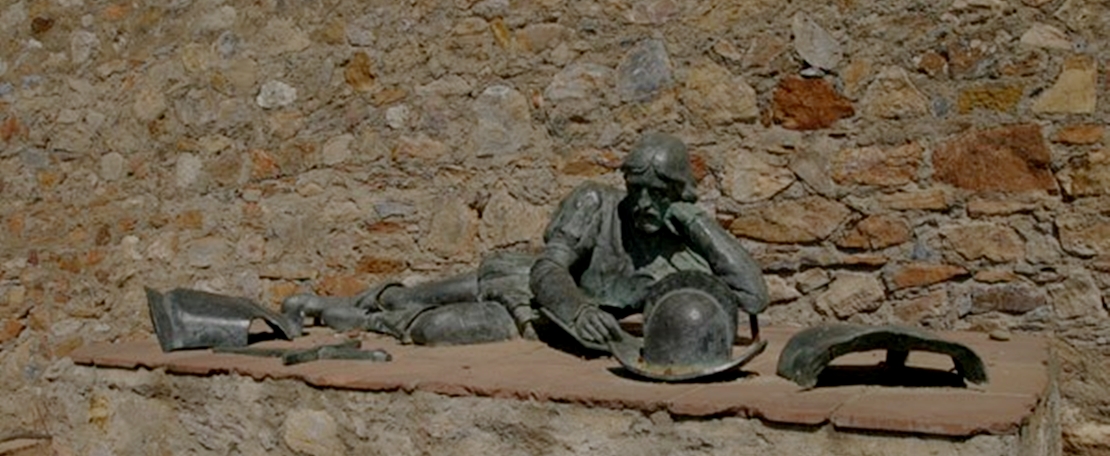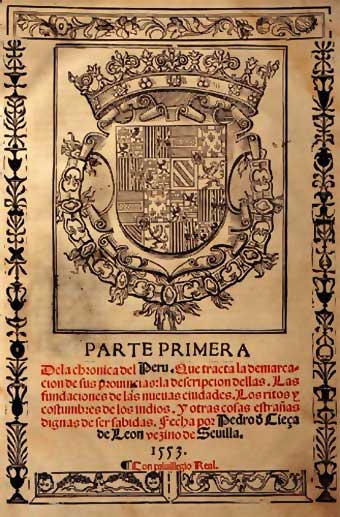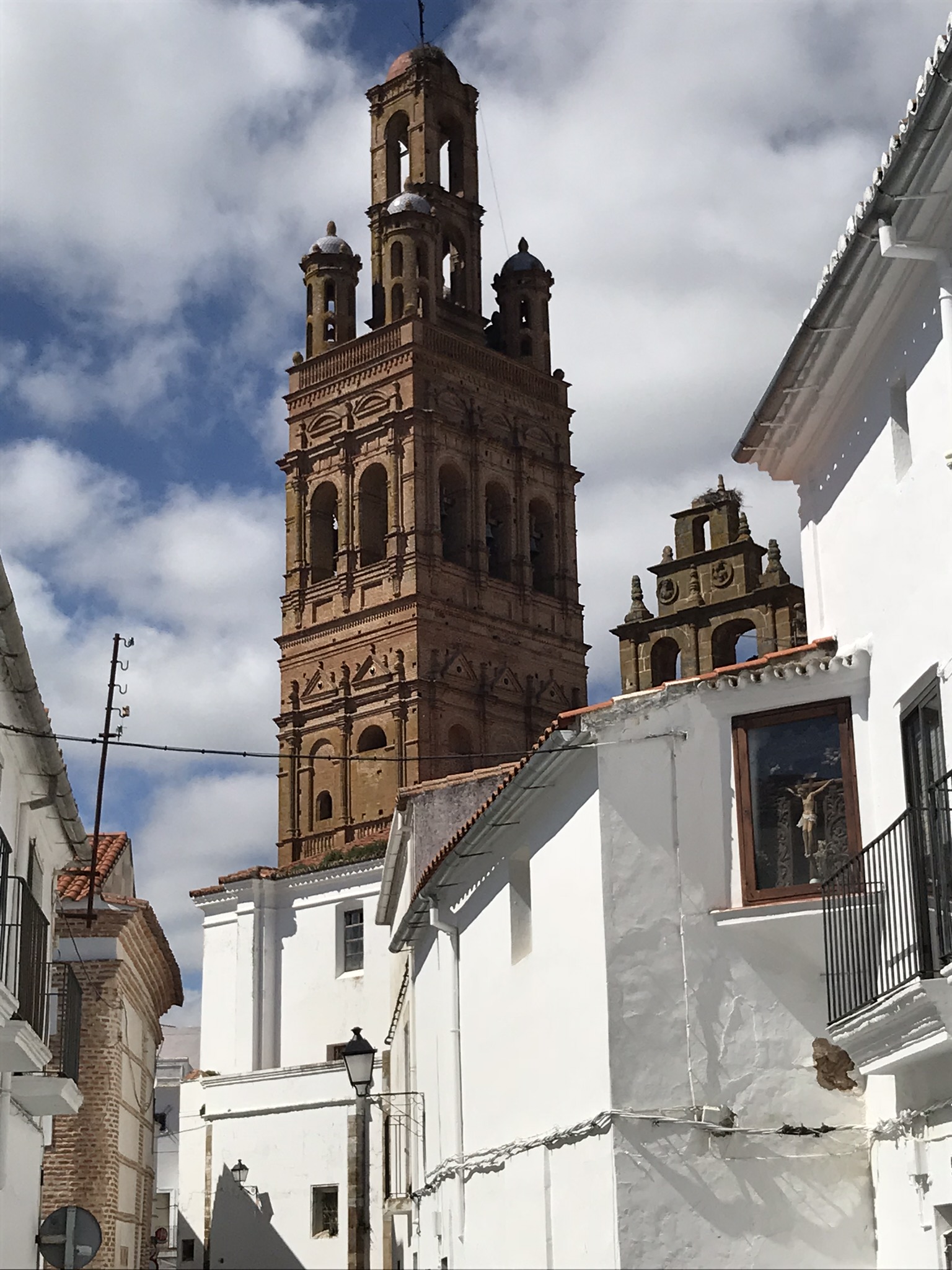スペインはかつて巨大帝国であったため、「黒い伝説(La Leyenda Negra)」と呼ばれるプロパガンダ――現代で言えばフェイクニュース――によって史実が歪められ、真実が十分に伝わっていない国だと、長年暮らしていて強く感じます。
今回ご紹介したいのは、じゃがいもがどのようにスペインに伝わり、そしてヨーロッパに広まったのかという歴史に関わる人物、ペドロ・シエサ・デ・レオン(Pedro Cieza de León) です。

彼は13歳で南米に渡った探検家、コンキスタドール(征服者)。16世紀スペイン人が実施した様々な探検から戦いを報道記者のように記録しており、特にペルーについて膨大な記録を残した記録作家としての彼の歩みには感動させられます。35歳で他界するまでに彼が残した数々の書記は、当時【クロ二カ・デ・ペルー】(ペルー年代記)として第1巻だけ出版され、残り3巻は19世紀まで日の目をみません。今では『スペインの記録作家のプリンス」と称えられるほど偉大な人物になっています。彼の記述は南米史を知る上で欠かす事の出来ない文献ですし、黒い伝説ではスペイン人探検家は皆野蛮人のように扱われていますが、このような人物も多く当時スペインの教育レベルの高さも明らかにしています。13歳で南米に渡る前に相当レベルの教育を受けていなければ、このような民俗学や人類学的な視点は持っていられなかった事でしょう。
写真は彼の生地Llerenaに残る銅像。

こちらがセビリャで出版された初版の【ペルー年代記】
南米に渡った人々はセビリヤの通商院Casa de la Contratacion de las Indiasという政府機関で記録されており、シエサが渡航した日1535年6月3日も明確に記されています。移民問題が最近話題ですが、16世紀にここまで制御されていた事に驚かされます。この機関は南米との貿易を王権統制下でコントロールするもので、南米との貿易や行政資料は今でもセビリヤやカディスに管理されています。その膨大なデータの量は研究が進んではいても全体像を知るには長い時間が必要だと思います。今後も大きな発見がこの資料の中にはあるでしょう。
シエサ・デ・レオンは軍人として南米探検をする間、他の人は眠っている時間に見聞きした事を書き残していたそうです。(銅像はその姿を表しています)様々な遠征の後、1548年ペルー現在のリマ(当時は【王家の町】と呼ばれていたそうです)で作家として活動するよう認められ、アンデスの人々の習慣、伝統、地理、王家の歴史などを本格的に記しています。
1551年にスペイン帰国。フェリペ2世に手書きの本を提出したそうです。セビリャで結婚、1553年に初版を出版、皮肉にも病で34歳の若さで他界。南米の過酷な環境を生き抜いてきたにも関わらず、こんなに若くして死んでしまったことは本当に残念です。これで第1巻以外は未発行で19世紀まで埋もれてしまいます。

写真は美しいシエサの故郷Llerena
シエサのもうひとつの貢献は、ヨーロッパに最初にじゃがいもとトウモロコシを輸入したところにもあります。キャラック船(スペイン語ではナオ)に10トン以上のじゃがいもを塩の上に載せ、動物のリャマ2頭と共に積み込んだそうです。
ところがセビリャの通商院では、この2つの食物は無益なものという評価を受けず商業目的での活用は許されず、シエサは仕方なく数十キロを故郷に持ち帰り畑に植えたそうです。これが残り現在のジャガイモに至っています。
今では食卓に欠かせないじゃがいもですが、こんな経路を辿ってスペインからヨーロッパ各地に広がっていきました。民間に浸透するまでには長い道のりがありましたが、19世紀にアイルランドで民衆を飢餓から救ったことは実に有名です。
下の写真はイェレーナの町にある博物館。美しいムデハル様式の建造物ですがシエサの家も良く似たスタイルの建物で、現在はプチホテルになって泊まることも可能です。ペルーの歴史をシエサの書籍で知った人なら、きっと思い出に残る滞在が出来ると思います。Casa Rural Cieza de Leonで検索してみてください。下にリンクを貼っておきます。
南米で偉業をなしたスペイン人の事を少しづつお伝えしたいと、最近強く感じています。

🇬🇧 English
Because Spain was once a great empire, much of its history has been overshadowed by the so-called Black Legend—propaganda that we might call “fake news” today. After living here for many years, I strongly feel that many truths about Spain’s past remain little known.
One such truth involves the potato and how it arrived in Spain and spread throughout Europe. Behind this story is a remarkable figure: Pedro Cieza de León.
At just 13 years old, he sailed to South America as a conquistador and explorer. More importantly, he was also a chronicler, carefully documenting the expeditions, battles, and cultures of the time, especially in Peru. His work, Crónica del Perú, was intended to be four volumes, but only the first was published during his lifetime. The rest remained hidden until the 19th century. Today, he is celebrated as the “Prince of Spanish chroniclers.”
In his hometown of Llerena, a statue commemorates him, showing him writing during the hours when others slept. According to official records preserved in Seville’s Casa de la Contratación de las Indias, his departure to the Americas is precisely dated to June 3, 1535. It is astonishing to realize how strictly migration and trade were already regulated in the 16th century.
Cieza documented Andean traditions, geography, and dynasties with an anthropological approach rare for his time. Returning to Spain in 1551, he presented his manuscript to King Philip II, but he tragically died at only 34, shortly after the first volume was published in 1553.
Another of his legacies is that he was among the first to introduce potatoes and corn to Europe. He reportedly transported over ten tons of potatoes on a nao ship and planted some in his hometown. From there, potatoes gradually spread across Europe, eventually becoming a vital crop that saved millions during Ireland’s 19th-century famine.
In Llerena today, a museum honors his memory in a beautiful Mudejar-style building, and his family home has been converted into a charming rural hotel. For those who know Peru’s history through his chronicles, staying there would be unforgettable.
I feel strongly about continuing to share the stories of Spaniards who accomplished great deeds in the Americas.
🇪🇸 Español
España, por haber sido un gran imperio, ha estado marcada por la Leyenda Negra, una propaganda que hoy llamaríamos “fake news”, que ha distorsionado los hechos históricos. Tras muchos años viviendo aquí, siento que gran parte de la verdad aún no se conoce suficientemente.
Un episodio fascinante relacionado con esto es la llegada de la patata a España y su expansión por Europa, ligada a la figura de Pedro Cieza de León.
Con tan solo 13 años viajó a Sudamérica como conquistador y explorador, pero sobre todo como cronista. Registró como un reportero las expediciones y batallas de la época, y dejó una obra monumental sobre el Perú: la Crónica del Perú. Aunque pensada en cuatro volúmenes, solo el primero se publicó en vida; los demás permanecieron inéditos hasta el siglo XIX. Hoy se le reconoce como el “Príncipe de los cronistas españoles”.
En su ciudad natal, Llerena, se conserva una estatua que lo representa escribiendo durante las noches, cuando otros descansaban. Los archivos de la Casa de la Contratación de las Indias en Sevilla registran con precisión su partida hacia América el 3 de junio de 1535. Sorprende descubrir que ya en el siglo XVI la emigración y el comercio estuvieran tan controlados.
Cieza describió las costumbres, tradiciones, geografía e historia de los Andes con una mirada casi antropológica. Regresó a España en 1551, entregó su manuscrito al rey Felipe II, pero murió joven, a los 34 años, poco después de publicarse el primer volumen en 1553.
Su otra gran contribución fue traer por primera vez patatas y maíz a Europa. Se dice que transportó más de diez toneladas de patatas en una nao, y que llevó algunas a su tierra natal para plantarlas. Desde allí se difundieron poco a poco por Europa, hasta convertirse en un cultivo esencial que, en el siglo XIX, llegó a salvar de la hambruna a millones en Irlanda.
Hoy en Llerena un museo lo recuerda en un bello edificio mudéjar, y su casa familiar funciona como alojamiento rural. Para quienes conocen la historia del Perú a través de sus crónicas, sería una experiencia inolvidable hospedarse allí.
Siento cada vez más la necesidad de contar estas historias sobre los españoles que dejaron una huella profunda en América.


コメント